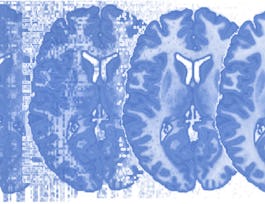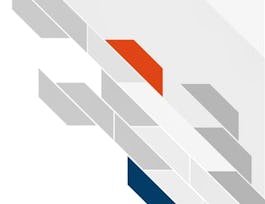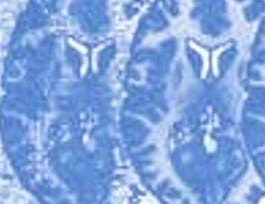Neurohacking describes how to use the R programming language (https://cran.r-project.org/) and its associated package to perform manipulation, processing, and analysis of neuroimaging data. We focus on publicly-available structural magnetic resonance imaging (MRI). We discuss concepts such as inhomogeneity correction, image registration, and image visualization.


Introduction to Neurohacking In R
This course is part of Neuroscience and Neuroimaging Specialization
Taught in English
Some content may not be translated



Instructors: Dr. Elizabeth Sweeney
23,339 already enrolled
Included with 
Course
(294 reviews)
Skills you'll gain
Details to know

Add to your LinkedIn profile
26 quizzes
Course
(294 reviews)
See how employees at top companies are mastering in-demand skills

Build your subject-matter expertise
- Learn new concepts from industry experts
- Gain a foundational understanding of a subject or tool
- Develop job-relevant skills with hands-on projects
- Earn a shareable career certificate


Earn a career certificate
Add this credential to your LinkedIn profile, resume, or CV
Share it on social media and in your performance review

There are 4 modules in this course
What's included
3 videos1 reading1 quiz
In this section, we will discuss different formats that brain images come in, as well as some of the commonly done magnetic resonance imaging (MRI) scans.
What's included
7 videos6 quizzes
In this section, we will discuss the steps done to process brain MRI data. We will discuss inhomogeneity correction, brain extraction or skull stripping, and various image registration techniques.
What's included
9 videos9 quizzes
In this section, we will discuss the different types of registration and how one would go through processing a multi-sequence MRI scan, as well as wrapper functions that make the process much easier. We also cover interactive exploration of brain image data and tissue-level (white/gray matter and cerebrospinal fluid (CSF)) segmentation from a T1-weighted image.
What's included
11 videos1 reading10 quizzes
Instructors

Offered by
Recommended if you're interested in Data Analysis

Johns Hopkins University

Johns Hopkins University

Johns Hopkins University

Coursera Project Network
Why people choose Coursera for their career




Learner reviews
Showing 3 of 294
294 reviews
- 5 stars
71.18%
- 4 stars
21.69%
- 3 stars
4.40%
- 2 stars
1.35%
- 1 star
1.35%
New to Data Analysis? Start here.

Open new doors with Coursera Plus
Unlimited access to 7,000+ world-class courses, hands-on projects, and job-ready certificate programs - all included in your subscription
Advance your career with an online degree
Earn a degree from world-class universities - 100% online
Join over 3,400 global companies that choose Coursera for Business
Upskill your employees to excel in the digital economy
Frequently asked questions
Access to lectures and assignments depends on your type of enrollment. If you take a course in audit mode, you will be able to see most course materials for free. To access graded assignments and to earn a Certificate, you will need to purchase the Certificate experience, during or after your audit. If you don't see the audit option:
The course may not offer an audit option. You can try a Free Trial instead, or apply for Financial Aid.
The course may offer 'Full Course, No Certificate' instead. This option lets you see all course materials, submit required assessments, and get a final grade. This also means that you will not be able to purchase a Certificate experience.
When you enroll in the course, you get access to all of the courses in the Specialization, and you earn a certificate when you complete the work. Your electronic Certificate will be added to your Accomplishments page - from there, you can print your Certificate or add it to your LinkedIn profile. If you only want to read and view the course content, you can audit the course for free.
If you subscribed, you get a 7-day free trial during which you can cancel at no penalty. After that, we don’t give refunds, but you can cancel your subscription at any time. See our full refund policy.

